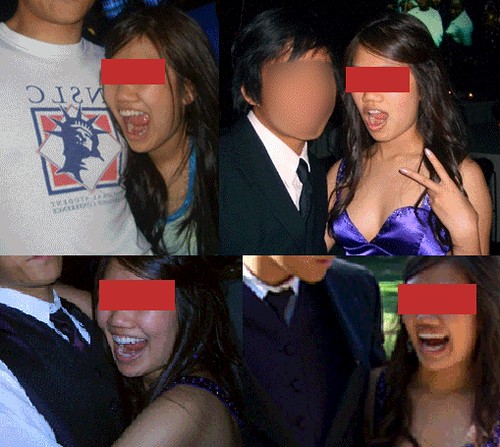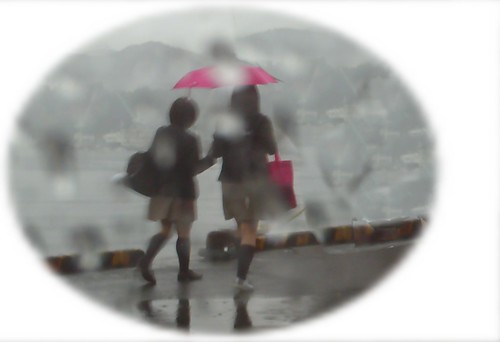Thursday, June 27, 2013
Intergroup Comparison versus Intragroup Relationships

The image above, adapted from Yuki (2003, p172) , shows how Americans and Japanese conceive of groups. Westerners concentrate on the name and set of central attributes of that group and all members feel themselves to share that attribute with all other members, in comparison with outgroups and their members who do not share the same attributes. These can be quite simple such as soccer fans may see membership of their teams fan base as derived from their belief that they "Want Chelse/Liverpool to win." They may chant "Chelsea, Chelsea," or "Liverpool, Liverpool," and they may mind merge with the social identity of their group becoming an outgroup hating herd animal. They do this to achieve vicarious self-enhancement through identification with the presumed superiority of their group. Their team wins, and the fans bask in reflected glory. Even if they loose they can believe that the fans are the most "loyal." And either way they can engage in an ego trip believing their group and/equals themselves to be superiority to others. Western group members therefore indulge in intergroup comparison, to enhance beliefs of the form "we are better than them" and "they are worse than us." This herd-like comparative group cognition is illustrated in the top diagram (a).
Japanese on the other hand pay attention to the many and various relationships and the network of relationships *within* their group. They have no interest in making downward comparison to the detriment of other groups. Their groups do not need a scapegoat, an other, to form at all. They are bonded by mutual cooperation, by "give and take" (a loan-expression from English into Japanese), obligation (giri) and ninjou (empathy) towards ingroup members. Rather than compare, they concentrate on maintaining ingroup harmony. Since the name of Japanese group game is cooperation, the individuality of the group members, their many and various talents that they can bring to the mix, are valued rather than ignored. So there is no moronic mind-merge, no hooligan herd, for the Japanese it would seem.
I love this theory and there is a lot of evidence to support it. Westerners are more likely to positively evaluate and be chummy with those that they are similar to (Heine, Foster, & Spina, 2009; Schug, Yuki, Horikawa, & Takemura, 2009), and more likely to remember information regarding inter-group rather than intra-group relationships (Takemura, Yuki, & Ohtsubo, 2010), whereas are more likely to trust someone in the same relationship network as themselves, rather than merely due to the fact of belonging to some nominal group (Yuki, Maddux, Brewer, & Takemura, 2005).
And as I have written before the emphasis for me is upon "nominal." Westerners like myself tend to conceive of others, their groups and themselves linguistically - in the latter case as having some shared characteristics. Whereas Japanese tend to conceive of groups in their imagination which results (as Lacan argues) in groups being conceived in terms of a network of binary relationships.
However, it occurred to me this morning, based upon the above argument, the group of "Americans" should also be that much more mind-merged, herdlike and amalgamous people - believing in common shared characteristics* - whereas the Japanese as a group, should, in so far as they understand themselves as a group at all, be bristling with individuals all cooperating together for the sake of synergy but never, for the sake of the same synergy, becoming the same. The motto of the Japanese group is, the words of Confuscious "harmonise not herd!" (和して同せず).
Thus in a culture with so great a respect for individuality, such as Japan under Yuki's theory, it is not surprising that "harmony" should be heralded and aspired towards. Likewise in a culture with so much mind-mulching, herdery, it is not surprising that individualism be that towards which its members are encouraged to aspire.
Does that satisfy? I think that I have gone a little too far and suggest a slight amendment to diagram (b) above. Yuki probably only drew the relationships as external to the group members in order to draw attention to them. He makes it entirely clear that intra-group attention is based upon the Interdependent model (Markus and Kitayama, 1991, diagram page 226) or in Kasulis (2010, diagram p 225) which provides philosophic, the relationships are shown interior to the selves. Implied by Yuki's analysis, I suggest therefore diagram (c) as a modification to diagram (b). Under this conception, the Japanese cease to be so radically individual, as compared to Americans, since they are aware that their individuality is fostered, created and maintained by virtue of their relationships with others which are self-forming and interpenetrate and overlap with the self.
How is this even possible? How can other person really be part of oneself? If that other person and your relationship is conceived in the visio-imaginary, then as Nishida (see Heisig, 2010) and Mach (1897), argue, it takes place in a place which is, paradoxically, both oneself and the world.
*The American Mantra: We hold these truths to be self-evident, that all men are created equal, that they are endowed by their Creator with certain unalienable Rights, that among these are Life, Liberty and the pursuit of Happiness.
Heine, S. J., Foster, J.-A. B., & Spina, R. (2009). Do birds of a feather universally flock together? Cultural variation in the similarity-attraction effect. Asian Journal of Social Psychology, 12(4), 247–258. Retrieved from onlinelibrary.wiley.com/doi/10.1111/j.1467-839X.2009.0128...
Heisig, J. W. (2010). Nishida’s Deodorized Basho and the Scent of Zeami’s Flower. In Frontiers of Japanese Philosophy 7: Classical Japanese Philosophy (pp. 247–73). Nagoya: Nanzan Institute for Religion and Culture. Retrieved from nirc.nanzan-u.ac.jp/staff/jheisig/pdf/Nishida%20and%20Zea...
Kasulis, T. P. (2010). Helping Western Readers Understand Japanese Philosophy. Dialogue, (34). Retrieved from nirc.nanzan-u.ac.jp/nfile/2124
Markus, H. R., & Kitayama, S. (1991). Culture and the self: Implications for cognition, emotion, and motivation. Psychological Review; Psychological Review, 98(2), 224. Retrieved from www.biu.ac.il/PS/docs/diesendruck/2.pdf
Schug, J., Yuki, M., Horikawa, H., & Takemura, K. (2009). Similarity attraction and actually selecting similar others: How cross-societal differences in relational mobility affect interpersonal similarity in Japan and the USA. Asian Journal of Social Psychology, 12(2), 95–103.
Takemura, K., Yuki, M., & Ohtsubo, Y. (2010). Attending inside or outside: A Japanese–US comparison of spontaneous memory of group information. Asian Journal of Social Psychology, 13(4), 303–307. doi:10.1111/j.1467-839X.2010.01327.x
Yuki, M. (2003). Intergroup comparison versus intragroup relationships: A cross-cultural examination of social identity theory in North American and East Asian cultural contexts. Social Psychology Quarterly, 166–183. Retrieved from www.jstor.org/stable/pdfplus/1519846.pdf
Yuki, Masaki, Maddux, W. W., Brewer, M. B., & Takemura, K. (2005). Cross-cultural differences in relationship-and group-based trust. Personality and Social Psychology Bulletin, 31(1), 48–62. Retrieved from psp.sagepub.com/content/31/1/48.short
Labels: collectivism, culture, image, individualism, japan, japanese culture, logos, Nacalian, 個人主義, 日本文化, 集団主義
Tuesday, June 18, 2013
The Man of Steel and The Masked Rider
Many Western scholars (e.g. Dennet, 1992) claim that we identify with the voice of conscience, the words in our head. One guy (Lacan, 2007) points out, that we also need to identify with our images of our face and body, that give a centre, place, or covering (Baudrillard, 1995), for our thoughts. He also says that identifying with our body image alone is impossible because we'd need to carry a mirror all the time. Language, on the other hand, provides a view on the self from the point of view of another, the Other (Lacan, 2007), the super-ego (Freud, 1913), an impartial observer (Smith, 1812), generalised other (Mead, 1967) or the super addressee (Bakhtin, 1986) of our thoughts. Lacan also claims that we can not identify with our self-images because we have many body images, an arm, our nose, our face in the mirror, a face from years ago. Our body images are a mishmash or human omlette (hommellette).
Recent research has shown however that humans have the ability to see themselves from an external perspective at a neuronal level (Blanke & Metzinger, 2009; Iacoboni, 2009; Metzinger, 2009). This ability to simulate seeing oneself without a mirror is found to be especially strong in East Asians (Heine, Takemoto, Moskalenko, Lasaleta, & Henrich, 2008; Wu & Keysar, 2007). The ability to see oneself is argued to be enhanced by performing fixed poses or kata (Zeami, 1984; Butler, 1993).
I theorise, therefore, that the Japanese identify with their body images, rather than their internal voice. Further, that just as Western body images provide a place for thoughts to take place, language or symbols even symbolic gestures - which are above all reiterable (Butler, 1993): repeatable, enduring in time - provides cohesion to the Japanese imago-self by giving a sort of temporal core that links the aforementioned scrap-book, or omelette, of body-images together.
Now onto superheroes. I theories that they are myths for the development of the self.
The quintessential Western superhero, Superman is someone that spends a lot of his time thinking to himself. His words, as his true identify, fly. He has two fathers. He converses with the memory of his astral father that endowed him with super powers. Superman is a hard-boiled, self narrator. His super suit, the image he presents us, is merely a cover for this true identity.
Many Japanese heroes however transform in front of people with great aplomb. Not for them the telephone box, some of them even transform on stage (Shinkenja). The requirement that heroes transform is universal since they deal with the genesis of the self, but only in the West is transformation required to hide a secret identity. Japanese super heroes use super-symbols (an amulet from a Shrine in Mirror Man; a beta capsule in Ultraman, medals, cards, characters written in the air, or rings in Kamen Rider; a seal in Mitokoumon, and lots of kata or poses: see second video above) which allows them to transform into their super form. Japanese heroes have suits too, or rather and in many ways they are their suits, especially in Kamen Rider (and a more extreme degree in Gundam and Evangelion).
These two genres of superhero, Western and Japanese illustrate the genesis of the self formed of language and image. Superman is his thoughts. His suit or image is merely a covering that allows him to be his true identity. Kamen Rider's super heroism resides in his suit. His symbols are an externally derived catalyst that allows him to transform, and pull his suit together.
Finally this brings me to a further aspect of Japanese superheroes. After they transform (Henshin) They often combine (especially in the Power Rangers series), which illustrates I believe two things: the cohension of various self images or "hommelette", and the combination of various self views, the generalising of the visual other. Gattai.
Upon this analysis, Iron Man is a cross-over hero for Americans and Japanese.
Acknowledgement
Thanks to James Ewing, to whom his post is dedicated, for drawing my attention to Mirror Man, one of the first transforming Japanese superheroes, which provides the link between symbolic transformation, Lacan, and the Japanese Shinto religion. Shinto shrines are sacred mirrors or places that dispense signs (amulets/omamori), Christian churches are houses of sacred language that dispense "the body".
Bibliography
Baudrillard, J. (1995). Simulcra and Simulation. (S. F. Glaser, Trans.). Univ of Michigan Pr.
Blanke, O., & Metzinger, T. (2009). Full-body illusions and minimal phenomenal selfhood. Trends in Cognitive Sciences, 13(1), 7–13. doi:10.1016/j.tics.2008.10.003
Butler, J. (1993). Bodies That Matter: On the Discursive Limits of "Sex. Routledge.
Dennett, D. C. (1992). The self as a center of narrative gravity. Self and consciousness: Multiple perspectives.Freud, S. (1913). Totem and taboo. (A. A. Brill, Trans.). New York: Moffat, Yard and Company. Retrieved from http://en.wikisource.org/wiki/Totem_and_Taboo
Heine, S. J., Takemoto, T., Moskalenko, S., Lasaleta, J., & Henrich, J. (2008). Mirrors in the head: Cultural variation in objective self-awareness. Personality and Social Psychology Bulletin, 34(7), 879–887. Retrieved from http://www2.psych.ubc.ca/~heine/docs/2008Mirrors.pdf
Iacoboni, M. (2009). Mirroring people: the science of empathy and how we connect with others. New York, N.Y.: Picador.
Lacan, J. (2007). Ecrits: The First Complete Edition in English. (B. Fink, Trans.) (1st ed.). W W Norton & Co Inc.
Mead, G. H. (1967). Mind, self, and society: From the standpoint of a social behaviorist (Vol. 1). The University of Chicago Press.
Metzinger, T. (2009). The Ego Tunnel: The Science of the Mind and the Myth of the Self (1st ed.). Basic Books.
Smith, A. (1812). The theory of moral sentiments. Retrieved from http://books.google.co.jp/books?hl=en&lr=&id=d-UUAAAAQAAJ&oi=fnd&pg=PP18&dq=%22The+Theory+of+moral+sentiments%22&ots=mjeEAFSIge&sig=LNXhHkNjKAWc2r9r_KiRDFxn_Pg
Wu, S., & Keysar, B. (2007). The effect of culture on perspective taking. Psychological science, 18(7), 600–606. Retrieved from http://pss.sagepub.com/content/18/7/600.short
Zeami. (1984). On the art of the nō drama: the major treatises of Zeami ; translated by J. Thomas Rimer, Yamazaki Masakazu. Princeton, N.J: Princeton University Press.
Labels: Bandai, Bokenger, henshin, image, japan, japanese culture, Jaques Lacan, Masked Riders, nihonbunka, スパー戦隊, 仮面ライダー
Wednesday, June 12, 2013
The Future Face is Now in Japan

As covered in the Huffington Post, research in to computational genomics carried out by Alan Kwan based primarily upon how faces have changed in the past, lead to the prediction of how faces will look 100,000 years in the future (created by Nickolay Lamm, a Pittsburgh-based artist).
To anyone familiar with Japanese culture, these faces of the future are reminiscent of the faces portrayed in manga, the faces of recent Japanese clothes store mannequins, the downward angle and automatic post-processing of "purikura" (Japanese photo-me?) booths which automatically increase the size of the eyes (as can be seen especially in the photo of the non-Japanese lady whose right eye has been enlarged to protrude from the side of her face), and even the faces of "GAL" style models (gyaru, ギャル)to be seen on the covers of Japanese magazines and even walking the streets.
The hypothesis that humans will tend towards the GAL shape of face suggests that the Japanese have not merely been influenced by Western culture, but have taken the best bits of both cultures to create an amalgam that is objectively superior combining those features that will (Kwan argues) go on to be genetically preferred, and created by generations of humans to come. In Japan the future face is now.
Top Image Copyright Nickolay Lamm, a Pittsburgh-based artist
Bottom row of Images
Left: Detail from a Manga by Miho Fujimura
Centre Left: A mannequin in a local store in Yamaguchi Japan.
Centre: 重体ことり プリクラ #dream5 by Myfavouriteblogs
Centre right: プリクラ渋谷 by Toshi Kanda
Right: Google image search thumbnails for the keyword "ポップティーン" a popular magazine of GAL fashion.
Labels: japan, japanese culture, nihonbunka, 日本文化
Sunday, June 09, 2013
Only One, Free Talk, and Beautiful Silence
In an attempt to encourage individualism among Japanese primary school students, the text of SMAP's "The only flower (like you) in the world" (sekai ni hitsu dake no hana translated) which encourages us to realise that we are the "only one" like ourselves, and appreciate and nurture our natural beauty, abilities and aspirations. The lyrics are displayed above the blackboard in this Japanese primary school. The children sang it in unison, very loudly at the start of class.
After singing the SMAP homage to individualism, the pupils are encourage to participate in "furi- toruku" (free talk) which is highly structured and anything but "free." Students were allowed to express a preference and then call on another student to express one of their preferences. Only those addressed were allowed to speak, briefly.
Later in the day, every day, the pupils, are required to clean the classroom as a group in complete silence. The school is aiming to carry out the most silent classroom cleaning in Japan.
Toruku (talk) is thus situated as something that should only be carried out in its proper place and only when addressed. At other times it is a distraction that is best eradicated.
At the school open day, at the end of the presentation regarding the schools pedagogy to the assembled parents, there was scheduled ten minutes for questions. After 15 seconds of silence, and not one question from the parents, the meeting was closed.
While the SMAP song does encourage individualism it uses the metaphor of beautiful flowers. I believe that Japanese students are encourage to appreciate and nurture their individual beauty, abilities and dreams as conceived in the imaginary, visual domain. In Japan talk is not "free", it is cheap.
The photograph is blurred so that the names of the children posted below the blackboard can not be read.
Labels: japan, japanese culture, Nacalian, nihonbunka, 日本文化
Atractive Asian Girl and The cultural psychology of the concept of Self.

There is an Internet meme that has been doing the rounds for several years featuring pictures an attractive Asian girl who often appears with the same open-mouthed expression in a large number of photos. She has been ridiculed and called lots of offensive names (google) , merely because she chooses to take this pose in several photographs.
It seems clear to me that this attractive Asian young lady has simply decided that she likes this pose, that she looks good doing, and that it expresses her character. So why shouldn't she use the same pose in any or even all the photos that she appears in?
My parents in law are active tourists. The have visited the Pyramids in Egypt, Marble Arch in London, Leeds Castle in Kent, the Rocky Mountains USA, and various locations in Asian. At all of these locations they take a souvenir photograph of themselves, superimposed upon the location, which the same expression, and posing in the neutral, dignified way. Only in one photo that I have seen is even their order reversed: except in one photo in their extensive souvenir travel photo album, my father in law stands on the right.
In some cultures, including Japan, where people are more identified with their self image, people like to present a positive and self-consisistent image of self. For them, visual self-consistency is important.
In other cultures, it is important to present an unchanging narrative of self. Kanagawa, Markus and Cross (2001) demonstrated that when Japanese are asked "Who are you" by a friend, in a group situation, by a teacher, and on their own, their self representations change with the social situation. Presumably they anticipate that each interlocutor seeks different information, and they have no desire to present a consistent (or enhanced) narrative self (Leuers [Takemoto], & Sonoda, 1999). Americans on the other hand, were inclined to narrate themselves in almost exactly the same no matter who is asking, and even when they are on their own, since (like the Asian lady in the above photo) they are concerned to present a consistent and attractive linguistic representation of self.
This is due to the nature of their Gods (super addressees, imaginary friends, hidden intra-psychic others). In the West God is always listening, in Japan God (お天道さま, or the ancestors) are always watching and protecting (見守っている).
Kanagawa, C., Cross, S. E., & Markus, H. R. (2001). “Who am I?” The cultural psychology of the conceptual self. Personality and Social Psychology Bulletin, 27(1), 90-103.
Leuers, T. R., & Sonoda, N. (1999). Independent self bias. Progress in Asian social psychology, 3, 87-104.
Should anyone wish the above photo to be taken down, please leave a comment.
お取り下げご希望の場合は下記のコメント欄か、http://nihonbunka.comで掲示されるメールアドレスにご一筆ください。
Labels: image, japan, japanese culture, Nacalian, nihonbunka, self, 日本文化
Thursday, June 06, 2013
Japanese Culture on Campus
Japanese Culture on Campus, a set on Flickr.
In preparation for the start of this year's Intercultural Communication course, I took some photographs of what I feel to be Japanese cultural phenomena on the campus of my university.
Labels: japan, japanese culture, nihonbunka, 日本文化
Tuesday, June 04, 2013
The School-boy Haiku Poet

A book of Japanese short verses (Haiku) by a schoolboy has been published recently (Kobayashi, 2013). The haiku that is featured on the cover, and used as the subtitle for the book, is good.
いじめられ
行きたし行けぬ
春の雨
Ijimerare
Ikitashi Ikenu
Haru no Ame
Bullied
I wanted to go but couldn't
Spring rain
The schoolboy poet was bullied at school and stayed at home quite often as a consequence.
As argued in previous posts Haiku poems attemtp to lead the reader to a little bit of Buddhist enlightenment by encouraging them to reach a erroneous interpretation of the poem before returning them to, or hinting at the nature of the poetic experience.
Rain often features in Haiku partly I think because rain can not usually be seen (except in its effects) only inferred. Two other famous haiku by Basho and Buson mention "rain" (encouraging the reading to attempt to imagine it) before admitting that they were in fact looking at a river, or houses on the far side of a river.
Is this schoolboy seeing rain? The poem is effective because it is inconclusive, hinting at another interpretation. School starts in spring in Japan, so one can imagine the schoolboy wanting to go to school but not going because his bullied and his feelings at this his predicament. I think we may imagine him crying. And there arises an alternative interpretation of the "Spring Rain." Is the spring rain the poets tears or not? The reader can imagine that the poet saw a wet spring day, a blurred image trough rain, glass or tears, but the in the face of the absense of a privelidged interpretation, the reader is returned to the uninterpreted image, the purity of the experience itself.
Above image based on detal from a photo by U-Ichiro 雨の港町
Kobayashi, K. 小林凜. (2013). ランドセル俳人の五・七・五 いじめられ行きたし行けぬ春の雨--11歳、不登校の少年。生きる希望は俳句を詠むこと。. ブックマン社.
Labels: japan, japanese culture, nihonbunka, 日本文化
This blog represents the opinions of the author, Timothy Takemoto, and not the opinions of his employer.



















